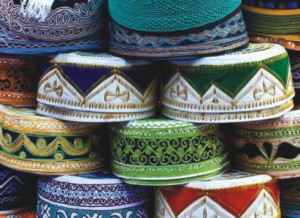 One Off One Off
Of Sartorial Confusion
Aly Zaker
In my visits to my village for over the last so many years I have tried to keep a close eye on the changes that were occurring all around me, something that obviously did not grab my attention in the city I lived in. Initially, these observations related to mere curiosity. Then, the closer I became with my village and its people, I started taking keener interest in things that make a people stand out in a crowd. I started becoming increasingly observant of sartorial matters.
The half-baked, half educated sociologist in me found that over a period of 10 to 15 years the attires of both women and men had undergone a change that was more than "just noticeable". A closer look at both women and men essentially revealed that while women were leaning more towards burqas and veils, the men, especially the young ones were adopting jeans with a fade or pieces of quintessential embroidery on them. They displayed through humming the songs of the day that were, oscillating with the tune to want to convey that they were a smart lot. But they were also exhibiting what one could pass off as being formal Islamic get up. A cap as a Muslim headgear had become quite in fashion.
I endeavoured to argue out the rationale. What could possibly have been the reasons for this change? The woman of the village was quite happy with a sari and the man in his lungi and a shirt. Why had this sudden change taken over? I had initially thought that maybe because in this strife-torn world when life was becoming increasingly uncertain, and therefore restive, people were taking more to religion. But a close look revealed that the faith or the belief of our common people had by no means increased since the days of our childhood.
My curiosity was compounded when in my Upazilla town a woman fully covered by Hijab approached me with full confidence. Such sure-footedness could hardly be imagined even a few years back. She came right up to me, gave me a salaam and asked me how I was doing. I could not imagine that a woman even without the kind of clothes she was wearing could ever be so uninhibited. I couldn't imagine even my country cousin in much less of clothing around her would have been so brave as to ask me how I was doing in the manner that this woman was asking. I responded to her greetings, and asked if I knew her for I had no idea as to who was speaking from within the veil. I could barely see her eyes. She said with ease that I would not know her. And that it was not important. She was a fan of mine and admired my acting. I was impressed. She was smart and unimpeded. Standing in a village bazaar I had to redefine the Hijab clad women. I said to her that I was glad that she was a fan of mine but the problem was that while the fan could see her favourite in full measure, the admired could not see the admirer except for her two gleaming eyes. I said, this was an injustice. And that there was no way of even knowing who she was. Was I talking to a human being or an apparition? And if she was so interested to talk to me she had to come out of the state she was in. She had no answer, seemed bewildered and excused herself to go for her other chores.
At this point I thought that maybe I should investigate a bit more about the Hijab factor and why it had become so pervasive in certain parts of Bangladesh. I believe that fashion in dress, can under no circumstances, be equated with religion. My mother and my grandmother were devout Muslims but I do not remember having ever seen them with such head to toe covering. They wore a veil of the anchaal around their head and that was all there was to it.
I discovered that in my part of the country many men went to the Middle East for earning their livelihood. The very first purchases they made for their wives back home invariably included a fancy Hijab. These were often made out of very well-designed fineries. Once they were sent back to the village, it became mandatory for the wives to wear them. The wives also felt that these were very fashionable and proudly displayed their feeling.
Well then, one could safely conjecture that Hijab that we see around us are more connected to where it comes from, who procures it and maybe a matter of taste rather than strict consideration of religion. In fact, it may not be out of place to mention that such garments as the abaya are not uncommon amongst the non-Muslim population of the Middle East. I have also discovered that the incursion of Hijab has happened most in those parts of Bangladesh which had a substantial number of men working in the Middle East. The same is true of the prevalence of headgears. Quite a few of these are innovations over the old caps that we wore while praying. These were more akin to Nepalese, Middle Eastern or Indian designs as worn in the Bombay films. These caps exude smartness and modern fashion or so the wearers think.
Religion and the values they represent are far deeper than those manifested through the clothes we wear, which may change from time to time. So will the headgears. With the enhancement of skill level of our people working in the Middle East and escalation of education level of our youth within the country such things as ceremonial coverings would become less significant, and real values of life would emerge as the standard bearer of civilisation.
Copyright
(R) thedailystar.net 2009 |
